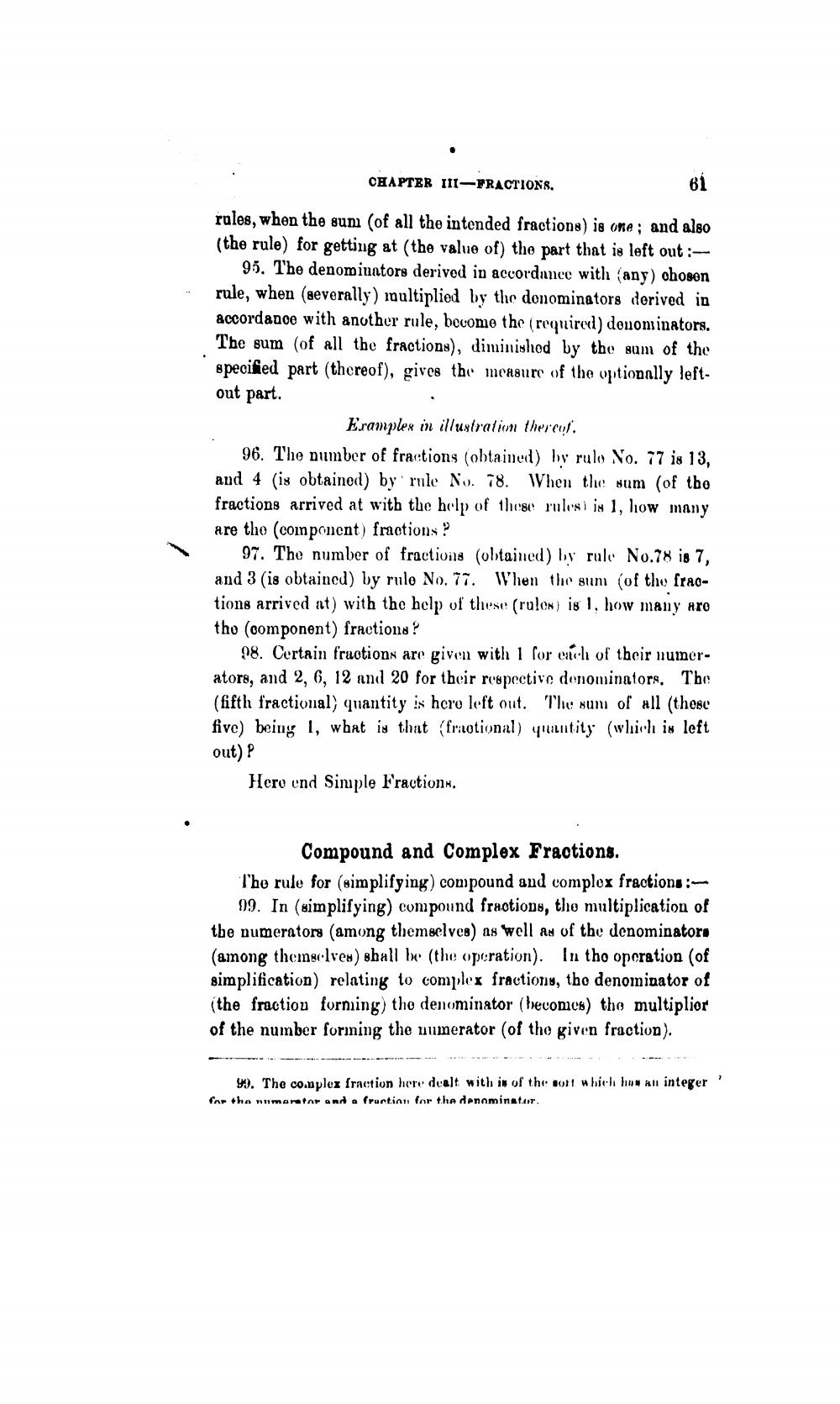________________
CHAPTER 11-PRACTIONS.
rules, when the sum (of all the intended fractions) is one ; and also (the rule) for getting at (the value of the part that is left out :
95. The denominators derived in accordance with any) chosen rule, when (severally) multiplied by the donominators derived in accordanoe with another rule, become the (required) denominators. The sum (of all the fractions), diminishod by the sum of the specified part (thereof), gives the measure of the optionally leftout part.
Eramples in illustration thercol. 96. The number of fractions (obtained by rulo No. 77 is 13, and 4 (is obtained) by rule No. 78. When the sum of the fractions arrived at with the help of these rules is 1, how many are tho (component) fractions?
97. The number of fractions (obtained) by rule No.78 is 7, and 3 (is obtained) by rulo No. 77. When the sum of the fraotions arrived at) with the help of these (rulen) is 1, how many pro tho (component) fractions ?
98. Certain fruotions are given with 1 for each of their numerators, and 2, 6, 12 and 20 for their respective denominators. The (fifth fractional) quantity is here left out. The uni of all (these five) being I, what is that (fraotional) quantity (which is left out)
Hero ond Simple Fractions.
Compound and Complex Fractions. l'ho rule for (simplifying) compound and complex fractions :
99. In (simplifying) compound fractions, the multiplication of the numerators (among themselves) as well as of the denominators (among themselves) shall be (the operation). In the operation (of simplification) relating to complex fractions, the denominator of (the fraction forning) tho denominator (becomes) tho multiplior of the number forining the numerator (of the given fraction).
4). The complex fraction here dealt with in of the soft which how all integer for the numerator and a fruction for the denominator




